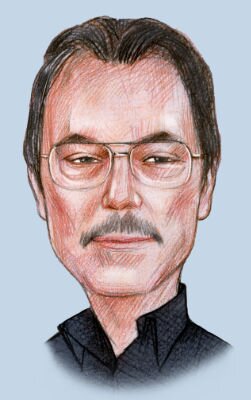
Charles Murray’s editor last week posted something about Murray’s latest book.
“Taking Religion Seriously by @charlesmurray may be the most important book I've ever edited,” Elizabeth Kantor wrote.
“It’s certainly one of the very best, out of well over a hundred books that I’ve been privileged to work on by philosophers, some of our greatest prose stylists, members of Congress, and prominent public intellectuals.”
I immediately ordered it. To be entirely accurate, I immediately ordered it again, as I expect to do a few more times: Christmas is coming, and it’s my responsibility to do what I can to save the immortal souls of friends and relatives. I had the sense that Murray’s new book would be a powerful tool in that pursuit.
Things had already come together as if it were foreordained that the book would take a place in my life. I had received a note from a close friend of nearly a half century. He has for all that time wanted to believe, but could never quite get there, and said he had seen a glimmer of light in advanced theoretical physics. I had coincidentally just seen an exquisite documentary about quantum entanglement on NHK. Then I heard of and watched an interview with Murray about his book. It began with how the math itself points to the existence of God.
That interview resulted in my ordering Taking Religion Seriously on CD for my friend, whose eyesight is failing. The CD is to be published a little before Christmas. The book is out now and, as noted, I ordered it, too. Then another copy, for someone who needs it.
And this all happened on one day.
The fact that it is Murray who wrote Taking Religion Seriously is a powerful argument in its favor. One of the few books that I find myself re-reading every few years is Apollo: The Race to the Moon, as beautifully written a piece of excellent reporting as you’ll ever find, even if it brings me despair over the impossibility of ever writing something as good. (I was given my copy by an editor at Simon and Schuster who was trying to persuade me to write its space shuttle equivalent, but it discouraged me from undertaking that task instead. If I did my very best work every day for a decade, the result would not survive comparison with the Apollo book written by Murray and his wife Catherine.)
So now we have Murray, a voice worthy of our attention who was to use the word coined by T.H. Huxley an “agnostic,” saying that absent personal divine revelation he had reasoned his way to God.
He goes so far to say that one’s spiritual sensitivity is perhaps an aptitude, a talent if you will, in the way our various other aptitudes manifest in varying degrees. That just as some of us can appreciate music fully, or art, some of us have to work at it, perhaps work very hard at it, just to achieve the level of competency that others find easy. He says his aptitude as pertains to spiritual revelation is low. But, he further avers, doing the work is worth it.
What nobody seems to be noticing is that many people — one in five, according to recent polls — don’t believe in God at all, and half of those who do believe in some kind of indistinct deity, a gaseous cloud of butterfiles and unicorns. Churches are missing the most basic of basics: Why believe at all?
That is my appraisal of the situation whence Murray rescues his readers.
He started with a blank sheet of paper and the serious researcher’s skeptical attitude of believing only that for which there is compelling evidence. He did indeed do the work. And he found the evidence.
He found that the Big Bang theory of the creation of the universe — space, time, everything — is nicely summed up in the declaration, “Let there be light.” Because that’s what happened. Murray makes a convincing case that for anyone who examines the facts the existence of God, at least as first mover, is all but inescapable. Murray shows how it’s impossible to believe there isn’t something supernatural going on. Physics, well-documented paranormal events — a lot of things that we cannot explain are pointed to and explained by religion.

That’s the first part of the book. The second part dives into Christianity.
In examining when the great discoveries were made and the great works of art were created, he discovers (as anyone who looked would) that much if not most of it took place under the aegis of the Roman Catholic Church. This is because the Church held that there was nothing to fear in exploring the truth, because the truth vindicates belief. (If you point to Galileo as a contradiction to this, you’re a dunce. Nicolaus Copernicus, himself a doctor of canon (church) law and possibly an ordained priest, founded the theory of a heliocentric solar system. Galileo was punished, and even then lightly, not for embracing the Copernican model but because he was a jerk who claimed theological authority.)
“In a very real sense,” Murray writes, “the Scientific Revolution was sponsored by the Roman Catholic Church.”
He quotes Rodney Stark, who tells us that the supposed battle between the Church and science is a lie: “From Thomas Hobbes through Carl Sagan and Richard Dawkins, false claims about religion and science have been used in the battle to ‘free’ the human mind from the ‘fetters of faith.’” Anyone with eyes to see can easily find that the atheists have been dead wrong, by mistake or by design, on the point all along. But it is not fashionable to admit it, and some people would rather jeopardize their immortal souls than be unfashionable.
Murray wades through all this in the manner typical of him, disregarding fashion in pursuit of credible information.
As is true with science, Christianity can claim credit for inspiring the great works of art and music for the half-millennium that ended with the rise of secularism at the end of the nineteenth century. Murray quotes a closing passage from one of his own books:
“Johann Sebastian Bach does not need to explain himself; he made a prima facie case that his way of looking at the universe needs to be taken seriously. It behooves us to do so.”
To which he now adds, “That last sentence encapsulates the difference between the person who began working on Human Accomplishment in 1997 and the one who finished the book in 2003.”
He examines the main points of Christianity, beginning with the essential C.S. Lewis and Mere Christianity. From there comes a consideration whether matters of right and wrong derive from convenience or, perhaps, something else. After considerable investigation he provides overwhelming evidence that the four books of the Gospels are all that they claim to be. The resurrection? It’s a better explanation of what happened than anything else that’s been found so far.
Murray devotes some space to one of my favorite subjects, the Shroud of Turin. As I have concluded — as anyone who has examined its study closely has concluded — it is likely that it is in fact the cloth that wrapped the body of Jesus.
All the while, Murray insists that he is not an authority. But he tells us who the authorities are, and where to find them. One could do worse than spend the next five years, or even the rest of his life, studying the material that Murray cites. At no point does he throw away his impeccable research skills and chase a cloud of fairy dust instead. In fact, he found in his research something that for many skeptics — at the time himself — is cause for alarm.
“To confront the straightforward implication of the evidence —that I have a soul — is intimidating.”
But even if one goes only on the scientific discoveries of the last century one finds that atheism and agnosticism are incapable of bearing the burden assigned to them.
“[W]e live at time when the relationship of religion to science has shifted in ways that require nonbelievers to reconsider their positions,” he writes.
And so. The great empiricist writer and thinker Charles Murray took on religion. To his delight, and ours, religion won.
His readers are left with the conclusion that if they don’t take religion seriously they’re not as clever as they think. At the end, Murray writes how doing the research that led to Taking Religion Seriously changed his life. I believe him, because reading it changed mine.
I think the editor Elizabeth Kantor is right.

Dennis E. Powell is crackpot-at-large at Open for Business. Powell was a reporter in New York and elsewhere before moving to Ohio, where he has (mostly) recovered. You can reach him at dep@drippingwithirony.com.
You need to be logged in if you wish to comment on this article. Sign in or sign up here.
Start the Conversation